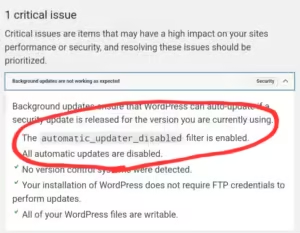
How Data Annotation Technology Works: A Deep Dive
In the realm of artificial intelligence (AI) and machine learning (ML), the quality of the data used to train algorithms is paramount. Data annotation technology plays a crucial role in preparing this data, enabling machines to understand and interpret the world around them. This article explores the intricacies of data annotation technology, its types, processes, applications, and challenges.
Understanding Data Annotation
Data annotation involves labeling data with relevant information so that ML models can learn from it. The process ensures that the algorithms can recognize patterns and make accurate predictions. Without properly annotated data, even the most sophisticated algorithms would struggle to perform effectively.
Types of Data Annotation
- Image Annotation
- Bounding Boxes: Rectangles drawn around objects within an image to highlight their location. For example, identifying cars, pedestrians, or traffic signs in autonomous driving datasets.
- Semantic Segmentation: Labeling each pixel in an image with a class. This technique is used in medical imaging to differentiate between various tissues and organs.
- Keypoint Annotation: Marking specific points of interest within an image, such as facial landmarks for facial recognition systems.
- Text Annotation
- Named Entity Recognition (NER): Identifying and labeling entities like names, dates, and locations within a text. This is crucial for information extraction and search engine optimization.
- Sentiment Analysis: Determining the sentiment expressed in a text, whether positive, negative, or neutral. This helps in analyzing customer feedback and social media monitoring.
- Text Classification: Categorizing text into predefined classes, such as spam detection in emails or topic classification in news articles.
- Audio Annotation
- Speech Recognition: Transcribing spoken words into written text. This is fundamental for virtual assistants like Siri and Alexa.
- Sound Classification: Identifying and labeling different types of sounds, such as distinguishing between a dog bark and a car horn.
- Speaker Identification: Recognizing who is speaking in an audio clip, useful in security and surveillance systems.
The Data Annotation Process
- Data Collection: The initial step involves gathering raw data that requires annotation. This data can be in the form of images, text documents, audio recordings, or videos.
- Annotation Tools: Various software tools are used to facilitate the annotation process. These tools provide user-friendly interfaces for annotators to draw bounding boxes, highlight text, or transcribe audio.
- Labeling: Annotators apply labels to the data according to predefined guidelines. For instance, drawing bounding boxes around vehicles in traffic images or highlighting product mentions in customer reviews.
- Quality Control: Ensuring the accuracy and consistency of annotations is crucial. Methods include having multiple annotators label the same data, automated checks, and expert reviews to maintain high standards.
- Integration: Once annotated, the data is integrated into ML models for training. The labeled data helps algorithms learn and improve their performance over time.
data annotation
Applications of Data Annotation
- Computer Vision: Data annotation is pivotal in tasks like object detection, facial recognition, and autonomous driving. Properly labeled images enable computers to understand and interpret visual information.
- Natural Language Processing (NLP): Annotated text data is used for chatbots, translation services, and sentiment analysis, enhancing the ability of machines to understand and generate human language.
- Speech Recognition: Annotated audio data is essential for developing virtual assistants, transcription services, and language learning applications, allowing machines to accurately recognize and respond to spoken words.
Challenges in Data Annotation
- Scalability: Annotating large datasets can be time-consuming and expensive. As the demand for more complex AI applications grows, so does the need for extensive, high-quality annotated data.
- Consistency: Different annotators may label data differently, leading to inconsistencies. Establishing clear guidelines and thorough training for annotators is essential to maintain uniformity.
- Complexity: Some tasks require specialized knowledge. For example, medical image annotation demands expertise in anatomy, while annotating legal documents requires an understanding of legal terminology.

Here’s an illustrative image representing how data annotation technology works. Each stage of the process is depicted, showing the flow from data collection to integration into machine learning models.
Image Breakdown:
- Data Collection:
- Description: Gathering raw data (images, text, audio).
- Visual: Blue rectangle with text.
- Annotation Tools:
- Description: Using software tools for annotation.
- Visual: Green rectangle with text.
- Labeling:
- Description: Applying labels according to guidelines.
- Visual: Yellow rectangle with text.
- Quality Control:
- Description: Ensuring accuracy and consistency.
- Visual: Red rectangle with text.
- Integration:
- Description: Training ML models with annotated data.
- Visual: Salmon rectangle with text.
Arrows indicate the flow from one step to the next, with additional explanations provided next to each section for clarity. This visual guide helps in understanding the sequential nature of data annotation and its importance in creating effective AI and ML applications.
data annotation
The Future of Data Annotation
As AI and ML continue to evolve, the need for sophisticated data annotation techniques will only increase. Advances in automation and AI-driven annotation tools are expected to streamline the process, reducing the reliance on manual labor and enhancing accuracy. However, human oversight will remain crucial to ensure the quality and relevance of annotated data.
In conclusion, data annotation technology is the backbone of effective AI and ML applications. By meticulously labeling data, we provide the foundational knowledge that machines need to understand and interact with the world, paving the way for innovative solutions across various industries.





